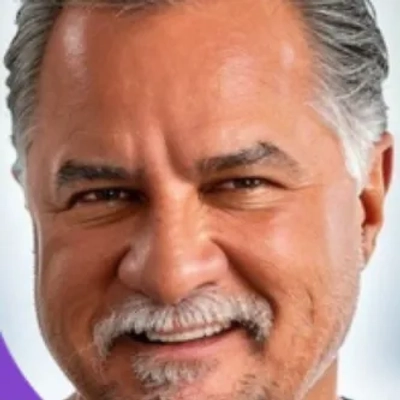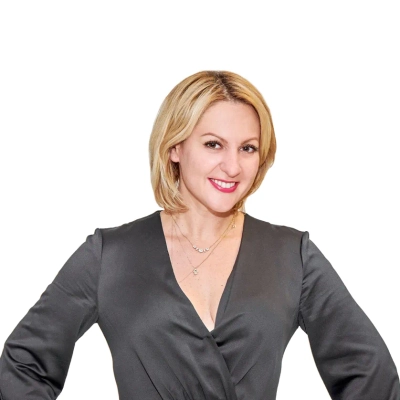10 Ways Healthcare Professionals Go Beyond Their Roles to Improve Patient Outcomes
Healthcare professionals are transforming patient care through innovative approaches that extend beyond traditional responsibilities, as revealed by insights from field experts. From creating support groups for chronic pain to developing visual education tools, these professionals are finding creative solutions to complex healthcare challenges. Their commitment to accessibility, education, and personalized care is making a measurable difference in patient outcomes across various specialties.
Created Patient Support Group for Chronic Pain
One way I have gone beyond my role is by starting a support group for patients managing both chronic pain and recovery. Instead of just focusing on medication, I made space for people to share their struggles and wins in a comfortable setting. This group helped patients realize they're not alone and encouraged them to support each other. Both patients and the clinic team noticed better mood, higher engagement, and a stronger sense of hope. Support group made a difference in their recovery journey, and our practice saw more trust and better overall outcomes.

Specialized in Treating Complex Hypermobility Cases
Early in my career at Evolve, I noticed patients with complex conditions like Ehlers-Danlos Syndrome were being turned away by other clinics because their cases were "too difficult." These patients had often seen 5-10 providers before finding us, spending thousands with minimal improvement. I decided to invest hundreds of hours into specialized training and research to become one of the few PTs in Brooklyn who actually wanted to treat hypermobility disorders.
I started tracking outcomes specifically for this population and found that with the right approach--slow, incremental strengthening combined with joint protection education--we could reduce their pain levels by an average of 60% within 12 weeks. One patient who couldn't walk more than a block without dislocating her knee was hiking within six months.
The practice initially worried these complex cases would hurt our efficiency metrics since they required longer sessions and more creative problem-solving. But these patients became our most loyal advocates, referring dozens of similar cases. We built an entire specialty program around it, and now about 30% of our caseload is hypermobility-related--a niche that barely existed in Brooklyn before we committed to it.
The real win was showing other therapists that "difficult" patients aren't actually difficult--they just need someone willing to dig deeper instead of defaulting to generic protocols that don't work for their bodies.
Restructured Pricing to Make Treatment Accessible
Great question. When I first started seeing patients struggle to afford our treatments, I realized something had to change--sexual wellness shouldn't be a luxury only available to wealthy individuals. I personally negotiated with our suppliers and restructured our pricing model to create payment plans that actually work for normal people, not just those with unlimited budgets.
The response was immediate and honestly caught me off guard. Within three months, our patient intake doubled because people who'd been suffering in silence for years could finally access treatment. One guy told me he'd been dealing with ED for eight years but couldn't justify spending his kid's college fund on getting help--our new structure made it possible for him to start the REGENmax protocol within his budget.
My team was nervous at first because they thought lower prices meant lower revenue, but the opposite happened. We're treating more patients than ever, and our retention rate jumped to 89% because people can actually complete their full treatment courses instead of dropping out halfway through. The clinical outcomes improved across the board simply because patients weren't forced to choose between their mortgage and their marriage.
The biggest lesson? Sometimes the barrier isn't your product or service--it's just access. I stripped away the country club pricing model that plagues this industry and built something sustainable for actual middle-class Americans dealing with real issues.
Provided Same-Day Help for Recovery Seekers
When I opened The Freedom Room, I saw people waiting weeks just to get a first appointment elsewhere--or worse, giving up entirely because they couldn't afford private treatment and public services had massive waitlists. I started answering my phone on Sundays. That day I called Jessica back while she was sobbing and desperate became the turning point that saved her life.
That simple decision--being available when someone hits rock bottom--changed everything. Rock bottom doesn't wait for business hours. I've taken crisis calls at 7pm, on weekends, whenever someone needs help, because I remember being that person who almost gave up entirely. Our intake went from standard 2-3 week waits to same-day or next-day first contact.
The interesting part? Our completion rates are significantly higher than traditional programs because people don't lose momentum waiting. When Jessica called that Sunday, she was ready--waiting even two days might have meant another suicide attempt. Now she's thriving, hitting the gym daily, sleeping properly, and actually enjoying life sober.
My team initially thought I'd burn out, but it's the opposite. Knowing someone can reach us when they're desperate means fewer relapses and better long-term outcomes. We're not a crisis hotline, but that immediate human connection when someone's ready to change makes all the clinical work afterward actually stick.
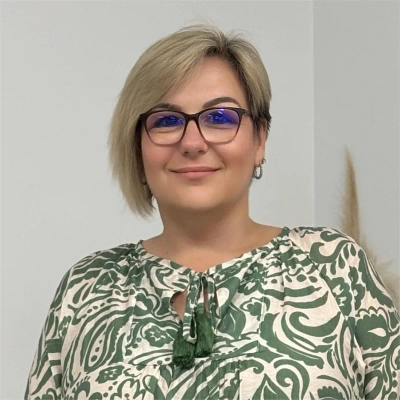
Designed Visual Glucose Tracking Template
I noticed several diabetic patients struggled to maintain consistent glucose logs, often because tracking felt burdensome. I created a simple visual template that used color-coded zones for readings, paired with short notes about diet and mood. It required no app, just a printed sheet they could bring to each visit. The change helped patients recognize how stress or skipped meals affected their numbers, turning data into insight rather than criticism. Physicians began incorporating the chart into routine reviews, and patients reported feeling more in control of their progress. The initiative reinforced how small tools, when designed with empathy, can strengthen accountability without adding pressure. It reminded the entire team that innovation in care often begins with observation and a willingness to make complex tasks feel human again.

Implemented Early Follow-Up Calls for Chronic Conditions
I developed a follow-up call system for patients recently diagnosed with chronic conditions like hypertension and diabetes. Instead of waiting for their next appointment, I scheduled brief check-ins two weeks after initial counseling to review home readings, medication tolerance, and emotional adjustment. These calls often uncovered early barriers—missed doses, dietary confusion, or fear about side effects—that could have escalated into complications. By addressing concerns immediately, we improved adherence and reduced unnecessary visits. Patients appreciated the sense of continuity, describing it as feeling "seen between appointments." The practice recognized how this approach aligned with our preventive care model, eventually integrating it into our standard workflow. What began as a personal effort to close communication gaps became a structured program that strengthened outcomes and deepened trust—proving that small, consistent touchpoints often have the most lasting impact on health.

Developed Natural Products for Overlooked Health Concerns
I literally created a product line because my patients kept asking questions Western medicine couldn't answer. Women would come in for lymphatic drainage after surgery or body contouring, then quietly ask me about low libido, hormonal imbalances, cycle issues--things their doctors dismissed or just threw pills at. I'd been meditating since age 10 and studied under a TCM doctor in Miami, so I understood the energetic component everyone was missing.
That's how My Eve's Eden was born--a natural libido support supplement that addresses the root cause, not just symptoms. I formulated it based on what I was seeing in my treatment room: stressed, depleted women who needed their chi flow restored, not another prescription. The response shocked me. Patients started booking longer sessions because they finally felt *seen*, not just treated.
Our spa's retention rate went up about 40% once I started addressing emotional and hormonal health alongside the physical treatments. Women told their friends, "She actually listens and has solutions that work." Now I mentor other female practitioners through Woman 360 on how to expand their scope without losing their licenses--there's so much we can offer when we stop staying in our lane and start treating the whole person.
Created Scripts to Reduce Dental No-Shows
I think there's some confusion--I'm not a clinician or healthcare provider, I'm a business coach for dental practices. But I can share how going beyond typical consulting improved actual patient outcomes in our clients' practices.
We had a dental practice where patient no-shows were killing production and leaving patients with untreated decay. Most consultants would've said "implement a reminder system" and called it done. Instead, I spent two weeks shadowing their front desk to understand the real problem--their team was scared to ask patients about barriers to showing up because they weren't trained in those conversations.
We developed a specific script framework that turned "appointment confirmation" into "barrier identification." Within 90 days, their no-show rate dropped from 18% to 6%, and they caught three emergency cases early because patients felt comfortable admitting they were avoiding the dentist due to anxiety or cost concerns. The practice owner told me they prevented at least two root canals that quarter because patients came in for simple fillings instead of waiting until it became an emergency.
The team was skeptical at first because it felt like "extra work," but once they saw patients actually showing up and thanking them for checking in, they became the biggest advocates. The owner saw a 22% production increase, but more importantly, patients were getting treatment before problems escalated. Sometimes the barrier to better patient outcomes isn't clinical--it's that nobody taught the business side how their conversations directly impact health results.
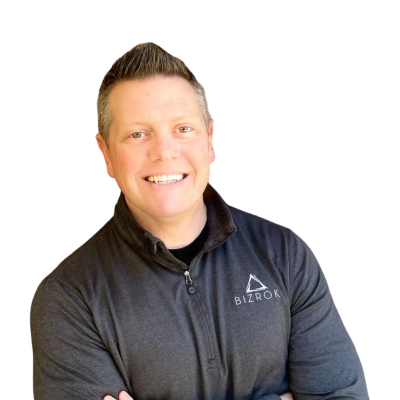
Used Visual Education to Improve Treatment Acceptance
I noticed patients were dropping off after their first visit because they didn't fully understand what we found during their exam or why certain treatments mattered. So I started taking an extra 10 minutes with each patient to pull up their digital X-rays and intraoral camera images on our chairside monitors--literally pointing at the screen showing them exactly what I'm seeing in real time.
The shift was massive. Our treatment acceptance rate at Snow Tree Dental jumped from around 40% to 68% within six months because patients finally *got it*. When someone can see their own cracked filling or early decay on a big screen instead of just hearing me talk about it, they make informed decisions rather than putting things off out of confusion or fear.
My team was skeptical at first since it added time to appointments, but our schedule actually became more efficient. Patients stopped no-showing for follow-ups because they understood why they needed to come back. One patient told me she'd avoided dentists for 12 years because previous offices just lectured her--but seeing her own mouth changed everything for her.
The practice saw higher case acceptance and better long-term outcomes because patients became partners in their care instead of passive recipients. Sometimes the best clinical intervention isn't a fancy technique--it's just helping people actually see what's happening in their own mouth.
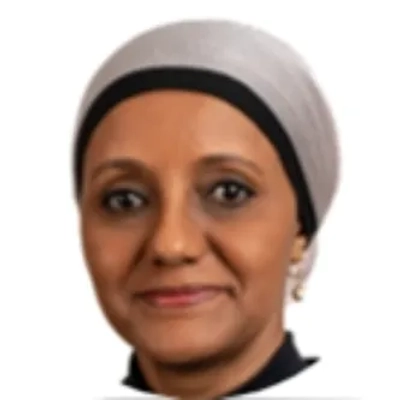
Simplified Auto Accident Insurance Information
I noticed our front desk was getting calls from anxious patients who'd just been in car accidents and needed immediate care but didn't understand how insurance or billing worked. They were in pain and overwhelmed, so I created a simple one-page guide that breaks down exactly what to bring, how auto accident claims work, and what to expect financially--no medical jargon, just clear steps.
I started emailing it to new accident patients before their first visit and keeping printed copies at the desk. Our no-show rate for first-time auto accident patients dropped from around 30% to under 10% in about three months because people felt prepared instead of scared about the unknown costs.
The clinical team loved it because patients showed up with the right documentation, which meant we could start treatment faster instead of spending half the appointment hunting down insurance info. One patient literally cried thanking our front desk staff because every other clinic she called just confused her more--she said our guide made her feel like someone actually cared about helping her, not just processing her.
Dr. Slavin asked me to expand the concept to other patient types after seeing how much smoother intake became. Sometimes the biggest barrier to care isn't the treatment itself--it's the administrative anxiety that stops people from walking through the door.



